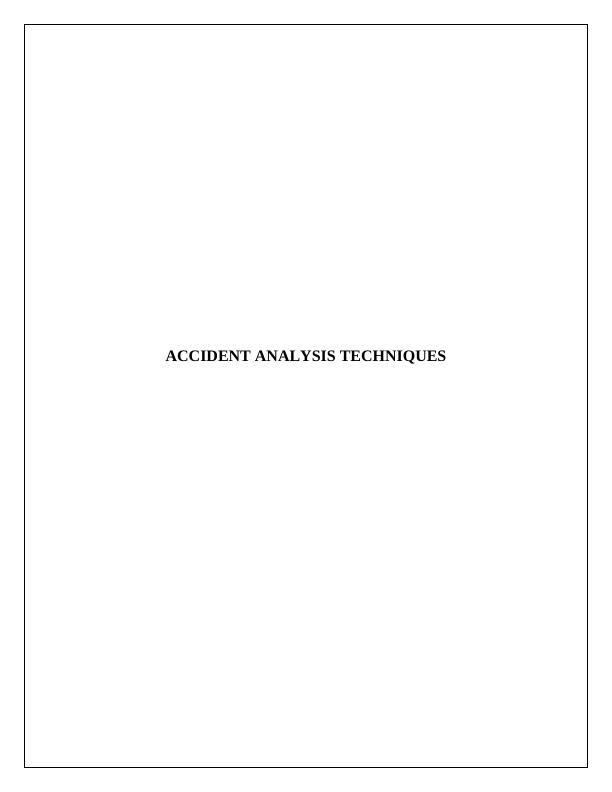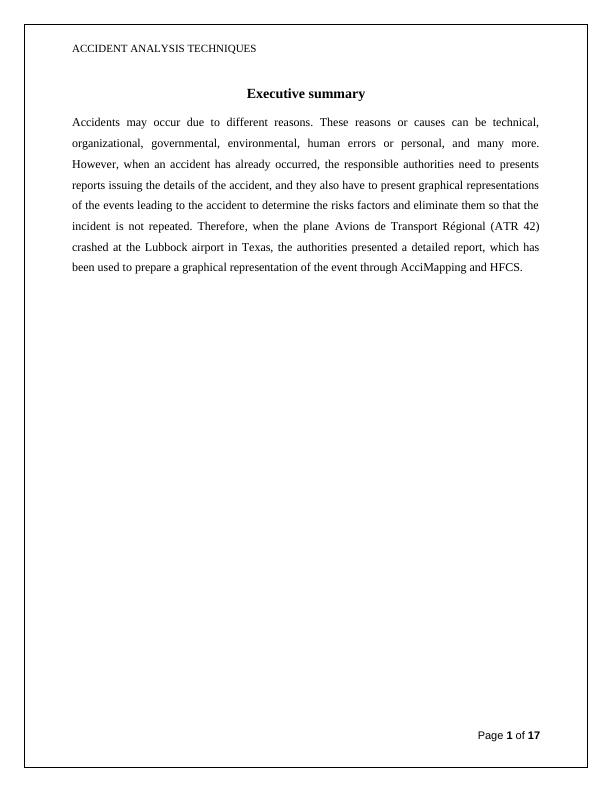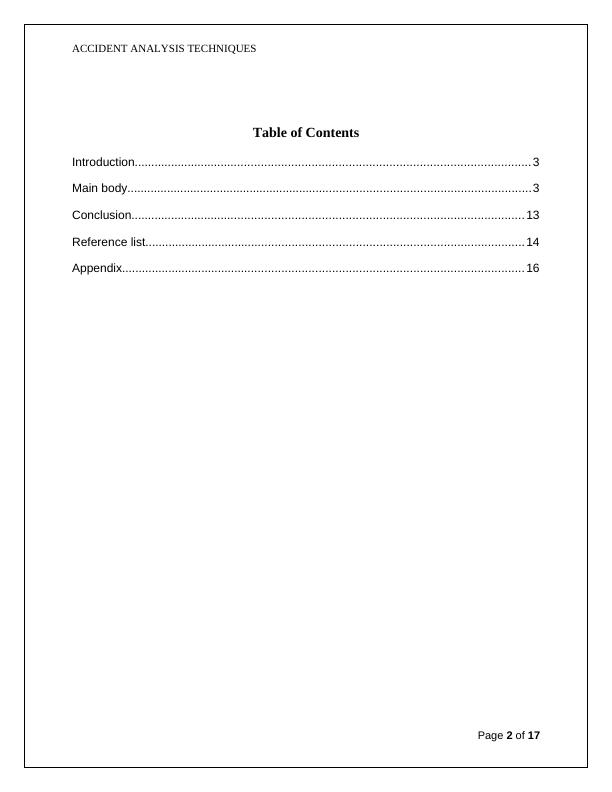Accident Analysis Techniques
Re-analyzing the Avions de Transport Régional (ATR 42) accident at Lubbock, Texas in January 27, 2009 using AcciMaps and Human Factors Analysis and Classification System (HFACS).
17 Pages3990 Words225 Views
Added on 2023-04-22
About This Document
This report discusses accident analysis techniques using AcciMaps and HFACS. It focuses on the Avions de Transport Régional (ATR 42) accident at Lubbock, Texas, and provides insights into the causes and factors leading to accidents. The report highlights the importance of understanding and preventing accidents through proper analysis and risk management.
Accident Analysis Techniques
Re-analyzing the Avions de Transport Régional (ATR 42) accident at Lubbock, Texas in January 27, 2009 using AcciMaps and Human Factors Analysis and Classification System (HFACS).
Added on 2023-04-22
ShareRelated Documents
End of preview
Want to access all the pages? Upload your documents or become a member.




